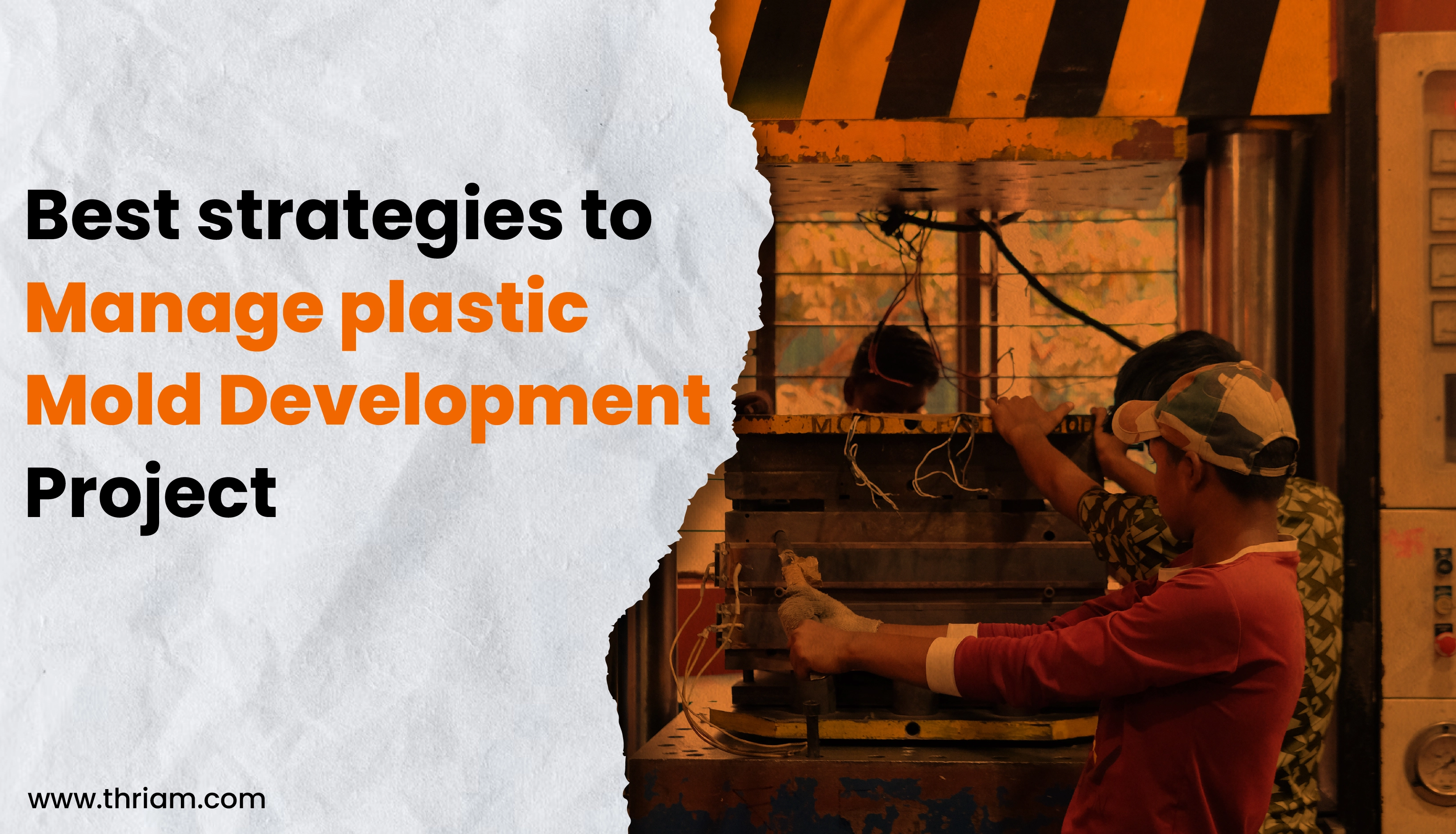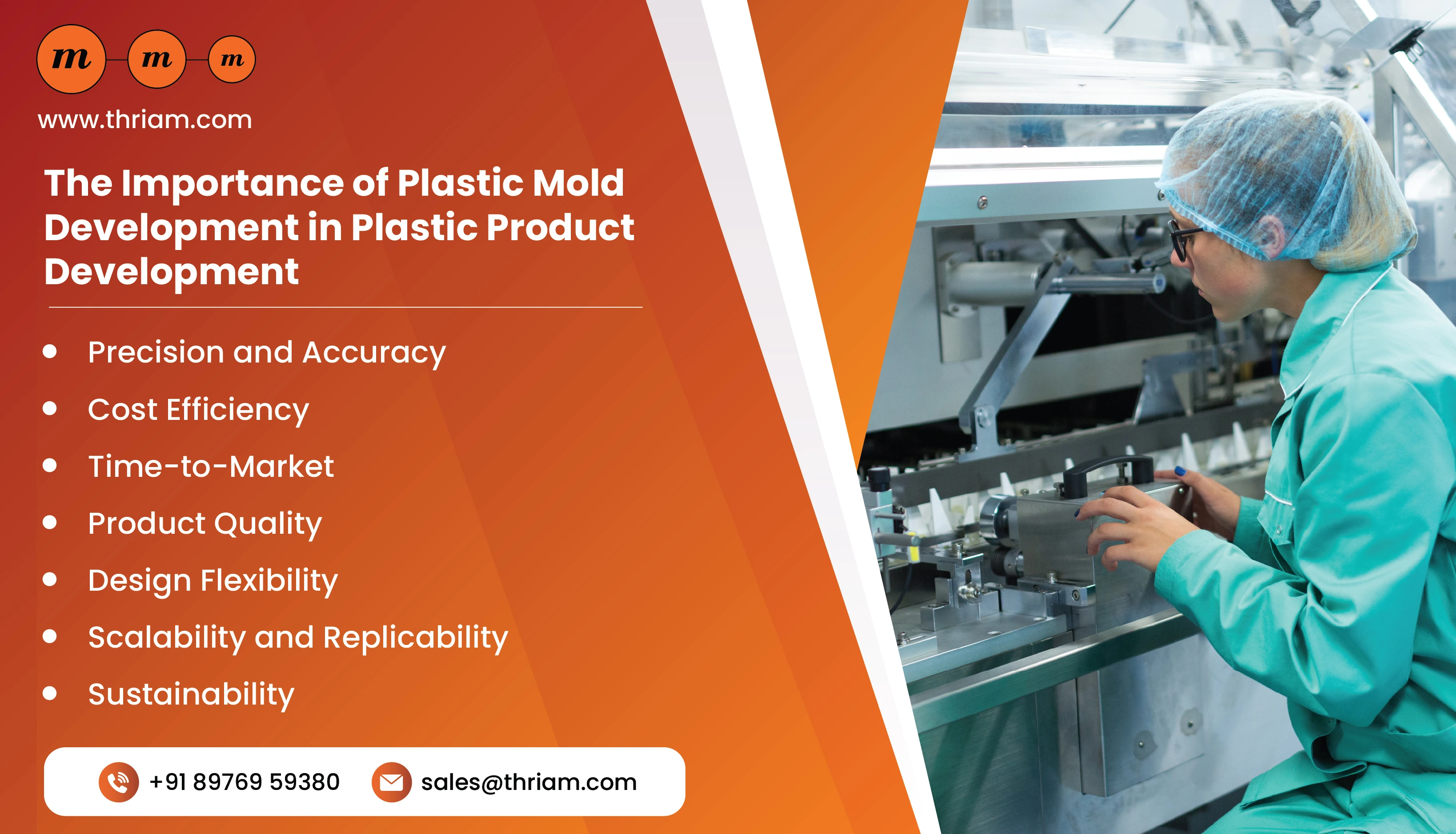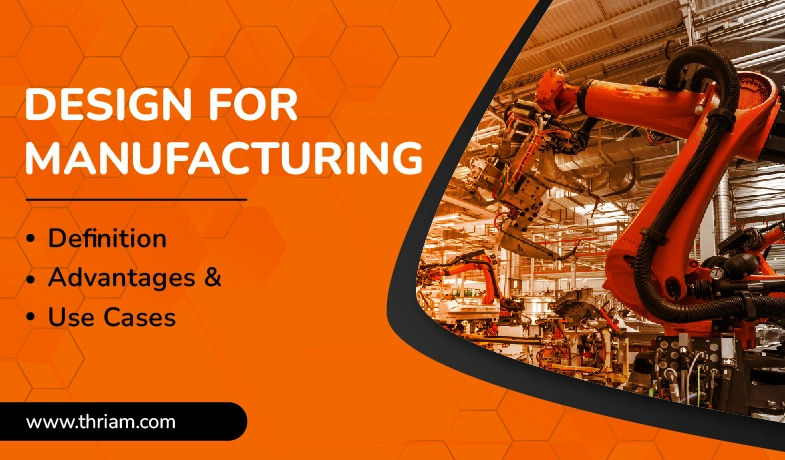Effective Strategies for Managing Mold Development Projects

Introduction:
Managing plastic mold development projects effectively is crucial for ensuring the success of a product and its production process. This blog will explore the importance of effective project management in mold development and provide key strategies to overcome challenges and complexities associated with these projects.
Understanding Plastic Mold Development Projects:
Plastic mold development projects involve designing and creating molds for producing plastic products. These projects can be complex due to the intricate nature of molds and the need for precision and accuracy. Challenges such as tight timelines, budget constraints, and technical considerations make effective management essential.
Key Strategies for Managing Mold Development Projects:
A. Planning Phase:
- Conducting a comprehensive product analysis: This involves analyzing the product's design requirements, specifications, and expected functionality. Understanding these aspects helps in designing molds that meet the desired objectives.
- Setting clear project objectives and scope: Clearly defining the project's purpose, deliverables, and limitations ensures that everyone involved understands their roles and responsibilities.
- Creating a detailed mold development plan: A well-structured plan with specific milestones and timelines helps in tracking progress and ensures that the project stays on schedule.
B. Resource Management:
- Identifying and allocating necessary resources: Assess and determine the required resources like materials, equipment, and personnel. Ensure these resources are available at the right time to avoid delays.
- Establishing a clear organizational structure: Define the project team roles and responsibilities, establish effective communication channels, and create a transparent reporting structure to ensure smooth workflow.
- Monitoring resource utilization: Regularly track and analyze resource utilization to identify areas of improvement, optimize efficiency, and make adjustments as needed.
C. Collaborative Design and Development:
- Promoting close collaboration: Foster collaboration between designers, engineers, and mold manufacturers. Encourage open communication, exchange of ideas, and feedback to ensure that the mold design aligns with the product design requirements.
- Incorporating Design for Manufacturability (DFM) principles: Integrate DFM principles early in the design process to optimize mold manufacturability, reduce costs, and enhance product quality.
- Conducting frequent design reviews and iterations: Regularly review and iterate the mold design to ensure compatibility with the product design. This iterative approach maximizes efficiency and reduces the risk of errors.
D. Risk Management:
- Anticipating and assessing potential risks: Identify and evaluate potential risks associated with mold development, such as material or design-related issues, manufacturing challenges, or external factors. Developing a risk management plan helps mitigate these risks.
- Developing contingency plans: Create backup plans to address identified risks promptly. This ensures that the project can continue without major disruptions, minimizing delays and increasing productivity.
- Regularly evaluating and updating risk management strategies: Continuously monitor and evaluate risk management strategies throughout the project. Update the strategies as necessary to address new risks that may arise during the mold development process.
E. Quality Control and Assurance:
- Implementing rigorous quality control measures: Establish quality control procedures at each stage of the mold development process. Conduct thorough inspections and testing to ensure compliance with specifications and design requirements.
- Conducting regular inspections and testing: Regularly check the mold and its components to identify deviations, defects, or any other quality issues. Timely detection and resolution of these issues ensure high-quality molds.
- Addressing deviations or issues promptly: If any issues are identified during inspections or testing, take immediate corrective actions to maintain quality standards and prevent further problems.
F. Project Monitoring and Tracking:
- Establishing key performance indicators (KPIs): Define measurable KPIs that reflect project progress and success criteria. These KPIs help monitor the project's performance and determine if it is on track to meet its objectives.
- Implementing a robust monitoring and tracking system: Use project management tools and software to track progress, monitor milestones, and allocate resources efficiently. This system allows for real-time visibility into project status.
- Analyzing project data for improvement: Regularly analyze project data to identify potential bottlenecks, areas for improvement, or process inefficiencies. Use this data to make informed decisions and optimize the mold development process.
The Importance of Plastic Mold Development in Plastic Product Development

Precision and Accuracy:
Plastic mold development ensures precision and accuracy in the manufacturing process. The design and construction of a mold dictate the dimensions, tolerances, and intricacies of the final product. A well-developed mold guarantees that each product is consistent in shape, size, and functionality, meeting the desired specifications.
Cost Efficiency:
Efficient plastic mold development leads to cost savings in the production process. By optimizing the mold design, materials, and processes, it becomes possible to reduce material waste, minimize rework, and enhance production efficiency. A well-designed mold maximizes resource utilization and reduces the overall production costs, making the product more economically viable.
Time-to-Market:
Plastic mold development directly impacts the speed at which a product can be brought to market. A well-planned and executed mold development process ensures that potential bottlenecks, delays, or design issues are identified and addressed early on, preventing costly rework or production delays. This allows for faster product development and quicker response to market demands.
Product Quality:
The development of a high-quality plastic mold is essential for producing products that meet or exceed customer expectations. A precise and well-engineered mold design ensures that the product is free of defects, has consistent quality, and functions as intended. By focusing on mold development, manufacturers can maintain high standards of quality control and assure customer satisfaction.
Design Flexibility:
Plastic mold development enables design flexibility, allowing for innovation and product differentiation. With the right mold, manufacturers can create complex and intricate product designs, incorporating features that enhance the functionality or aesthetic appeal. The ability to customize and adapt molds to evolving market trends and consumer demands is key for staying competitive in today's dynamic business environment.
Scalability and Replicability:
Well-developed plastic molds can be easily replicated, enabling efficient mass production. As the mold design is optimized, it becomes simpler to manufacture consistent and reliable products, even at high volumes. This scalability allows businesses to meet increasing market demands, ensure supply chain efficiency, and achieve economies of scale.
Sustainability:
Plastic mold development plays a vital role in promoting sustainability. By designing molds that minimize material waste, optimize energy consumption, and reduce environmental impact, manufacturers can contribute to sustainable practices. Additionally, the use of advanced technologies and materials in mold development can lead to the creation of eco-friendly products that align with environmental conservation efforts.
Conclusion
Effective management of mold development projects is crucial for achieving successful plastic product production. By implementing the strategies outlined in this blog, including thorough planning, resource management, collaborative design, risk management, quality control, and project monitoring, organizations can ensure a smooth and efficient mold development process. Investing time and effort in effective project management strategies is a key driver for project success, improved productivity, and the production of high-quality plastic molds.


